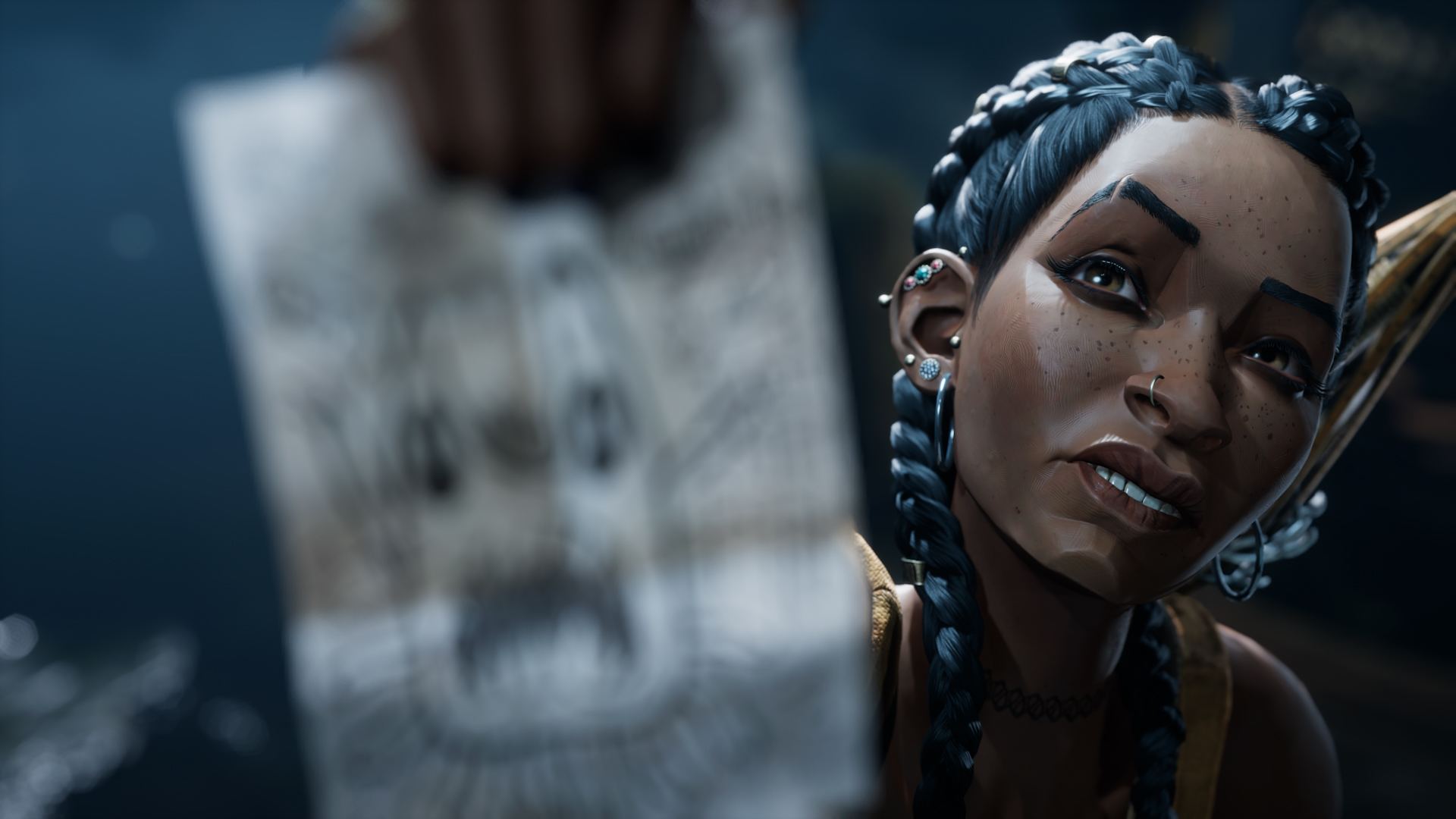
South of Midnight: The Hidden Details in that Gorgeous Reveal Trailer – Exclusive Interview
Revealed for the first time today during Xbox Games Showcase 2023, South of Midnight is a new third-person action-adventure set in a magic realist version of the American South. Developed by Compulsion Games (Contrast, We Happy Few) – and coming to Xbox Series X|S (with Xbox Game Pass), Windows PC (with PC Game Pass), and Steam – the reveal trailer gave us a sense of the place, the tone, the heroine, Hazel, and her mission to subdue supernatural creatures that have spilled into the world – but you still want to know more, right?
Fear not! I was lucky enough to sit down with creative director David Sears and narrative producer and creative specialist James Lewis to talk through, much, much more about this mysterious, beguiling new game. From the story and inspirations, to its magic and monsters, here’s our exclusive South of Midnight interview:
The Beginnings
South of Midnight’s trailer gives a sense of its world and story, but there’s more to learn. The game world will stretch across a fictionalized swathe of the U.S. – as Sears puts it, it’s inspired by “the more interesting geological, topographical, cultural, societal, historical areas of the South.”
While the game’s set in a version of the modern world, the settings you travel through will be almost exclusively rural, reflecting the places in between major urban areas, and the sense of wonder and danger they can hold. “It springs from the concept that monsters are real – you just need to jump over the backyard fence,” says Sears. “The farther you get away from the influences of civilization, the more magical the world becomes.”
That world will take in influences from two key genres of literature and movies that are less seen in games: “Magic Realism is, is one of the calling cards of Southern Gothic,” says Sears. “It’s a licence to actually put magic in the modern world, and to have creatures there that are just accepted. We’re not going to give you an information dump in the game, and that’s in the spirit of Magic Realism, right? We’re explaining enough that you will just accept it.”
“I felt like the South was underrepresented, and it deserves an honest love letter – it deserves its time in the spotlight.”
From the work of William Faulkner to “Night of the Hunter”, the team is crafting a game world that aims to feel new to players, and an honest reflection of the real-life region through a Gothic lens. “South of Midnight’s world is definitely a magically real place, much like the actual South,” Sears continues. “The South is a sultry, sexy, mysterious place that has not been in a lot of games. Any amount of wandering in the country is going to lead you to speculate that there might be more than what you’ve been led to believe. I felt like the South was underrepresented, and it deserves an honest love letter – it deserves its time in the spotlight.”
Hazel is set off on a quest to repair a broken world, most particularly by taking on mythical creatures – all based on real-life folklore from the region the game takes its inspirations from. And it’s going to get weird.
“The game is loosely inspired by me tramping around forgotten farms and abandoned places in Mississippi,” explains Sears. “I found artefacts from the Civil War, through the Depression, and more modern weirdness. Like a tree with doll heads nailed all over it. Why was that there in the middle of nowhere? Someone went to a lot of trouble to cart all these doll heads out into the middle of the woods, and then nail them to this tree. That’s the kind of stuff that you can expect from our world in South of Midnight. It’s based on the real world – but sometimes I think the real world is actually weirder than we’d like to think.”
All of this combines to make for a setting and tone that games haven’t represented all too often – and it’s seen through the eyes of a similarly singular character.
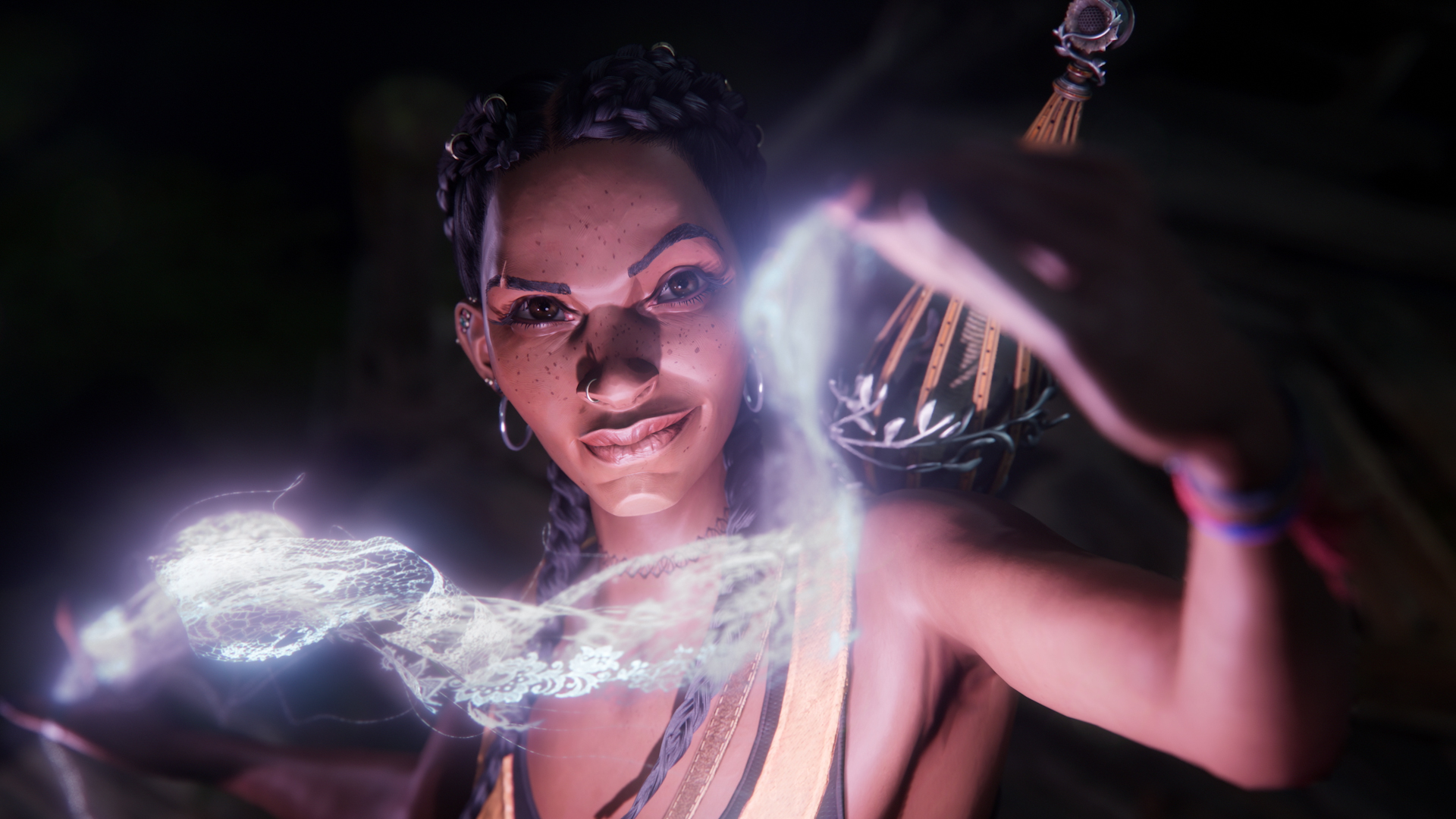
The Heroine
Hazel’s trailer appearance makes clear that she’s our lead – outwardly confident, wisecracking, and actively on the hunt. Setting off from the fictional town of Prospero – a town left behind by wider society – she’s taken up the mantle of protector.
But key to Compulsion’s work wasn’t in just creating a blank canvas to imprint on – Hazel has been designed to feel like a real person who we happen to be accompanying on her journey. When we meet her, Hazel’s grown up through a complex relationship with her mother, multiple failures, and societal injustice. She’s sarcastic and disillusioned, and the humor we see in the trailer might be as much a defence mechanism as it is genuine. And in putting a Black woman in a central role, Compulsion also knew it had a responsibility to represent her correctly.
“I think seeing a Black woman as a protagonist, unfortunately, is still pretty unique for video games, especially of this scope,” says Lewis. “I think part of the trouble of having limited representation is that it can put a lot of pressure on any one character to represent every aspect of a culture.
“To tell the story of a Black woman in this setting creates another level of complexity that the team had to meet with curiosity and empathy. The approach to this had to start by having just proper representation on the team, ensuring that we had Black women and women of colour on our narrative team is key for understanding and writing Hazel’s voice.”
“I think the reason Hazel stands out for me is she has many of the same issues as real people have, which is refreshing as she’s trying to learn to be a hero,” adds Sears. “But she’s unstoppable. And it’s about her finding her footing and going out into the world to make it a better place.”
The result is a character Compulsion feels is fully-formed – not an avatar, but a human being we’ll learn about and love over the course of the game. But, of course, Hazel isn’t entirely familiar to us, for one key reason…
“Weavers repair tears in the grand tapestry that makes up every person, place and thing in existence.”
The Magic
At the end of the trailer, we see Hazel wielding magic – a very specific type of magic known as Weaving. Used both for combat and traversal, Weaving will be the bedrock of your interactions in South of Midnight – and it sounds very different from your standard video game “fireball in the hand” approach.
“It’s full of fractal geometry expressed as knitting and doilies – everything is themed after textiles,” explains Sears. “Essentially, you take the strands that make up the universe and weave or spin them into useful forms for the player to use.
“Weavers are born with the ability to see deeper and see the way the universe is really constructed by these energized, semi-autonomous strands. The universe has intention, but sometimes it breaks down. And that’s why we have Weavers – to repair tears in the grand tapestry that makes up every person, place and thing in existence.” Effectively Hazel’s power isn’t to simply destroy the monsters that have appeared in the world, but to repair the tears in the world itself that have let them spill through. And speaking of those creatures…
“It was very liberating to work with existing stories about creatures, but have zero eyewitness accounts and photographic evidence.”
The Creatures
We never get a true glimpse at Hazel’s quarry in the trailer, but we see from her own drawing that it’s the Altamaha-ha, which – like all of South of Midnight’s supernatural threats – is based on real-life folklore from the Deep South. The rich cultural mix of the area, including European, Caribbean and African storytelling has led to a unique oral tradition that the game draws on for its unusual menagerie. Again, this is based on Sears’ own childhood in the area.
“It was very liberating to work with existing stories about creatures, but have zero eyewitness accounts and photographic evidence. My grandmother used to tell really short stories about some of these creatures, mostly reduced to the level of superstition. Like, ‘We paint our porch ceilings blue, so the Haints [evil spirits from Southern folktales] can’t come in.’ And this is essentially about as much as we know about Haints.”
That openness to interpretation let Compulsion run wild with ideas for the game’s enemies. “So, for Haints, I’m extrapolating from that, ‘OK, so they can’t come in because they see blue and they don’t want to drown because they think it’s a river. So they have very poor eyesight, and that explains some of their behavior. So it’s just this weird cultural archaeology and reverse engineering to create stories and biologies for creatures.”
But true monsters aren’t the only thing we’ll find in South of Midnight’s world. Lewis even suggests they might not even be the biggest problem for Hazel: “I think as we explore these different creatures, and how our protagonist views these creatures, we can juxtapose that with some of the other characters in the game. ‘Where do the threats really lie?’ is just something for our protagonist to figure out.”
The trailer might have given us a clue there, too.
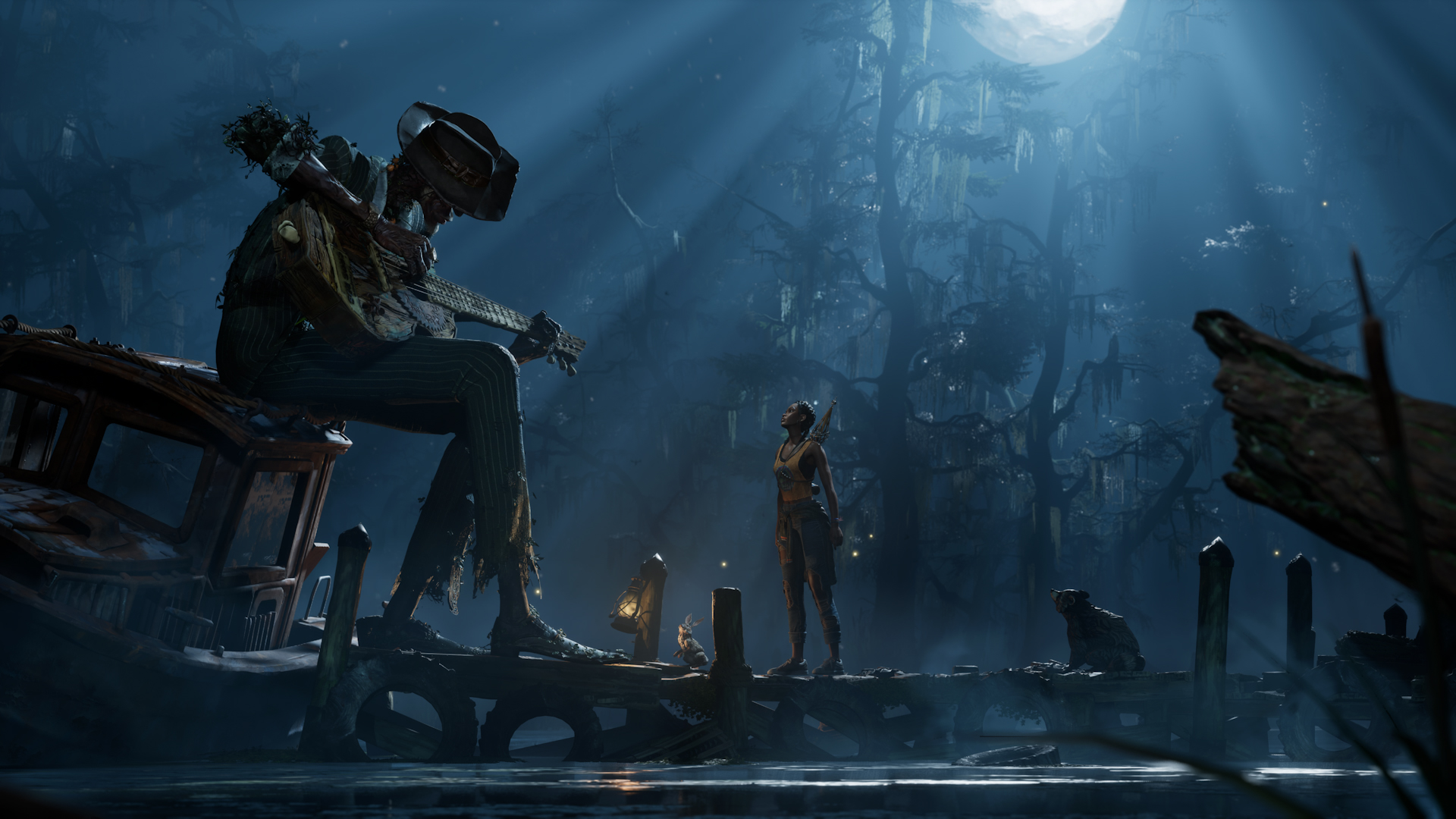
The Mysterious Shakin’ Bones
Before we even see Hazel, we meet Shakin’ Bones. Unlike the unseen monster of the trailer, this seems to be a character with autonomy and importance to Hazel’s journey. And he doesn’t necessarily seem to be on her side.
“He is an Archon, or an icon of the entertainment archetype,” explains Sears. “He’s inspired by the legend of Robert Johnson, the man who presumably made a deal with the Devil at the crossroads – which we went and visited as part of the research for this project. He’s an immortal figure, roughly analogous to the ferry boatman in Greek mythology, Charon, as he escorts you from the real world into a more fabulistic place.”
The idea of Archons – a Gnostic term used for the builders of the universe – implies that we’ll meet more of these immortal figures on our journey, each with their own particular area of influence. As part of that position as an entertainment Archon, Shakin’ Bones gives us a rendition of blues standard ‘Death Don’t Have No Mercy’ – originally written and performed by the legendary Rev. Gary Davis – and, quite apart from setting an ominous tone, it also shows a little of how important music will be in South of Midnight.
“This is the first game I’ve gotten to work on where we are treating the music design as seriously as the game design and the art direction.”
The Music
“Music is huge for us,” enthuses Sears. “Our composer, much like an art director, has a unifying concept art for key locations in the game. We’ve written and performed concept songs that represent each of the different creature kingdoms in the game. I’ve actually been very busy writing murder ballads and really sad lullabies and all kinds of things to support that effort. Music is a driving force for us. And it’s an echo of what we’re doing with the magic system – the musicality that’s involved in traversal and combat is pretty apparent.”
Diegetic music will also cement the part of the world we’re in. “There are certain sounds that we immediately associate with the American South; blues, or gospel, or folk music. It’s hard to have a game set in this region of the world without, you know, appreciating kind of that rich legacy of music.”
Sears adds: “The entire map is a compilation of all the most interesting or unique places in the south. We’re also representing the music that way. This is the first game I’ve gotten to work on where we are treating the music design as seriously as the game design and the art direction.”
That must be pretty serious, because the art direction is hardly straightforward, either.
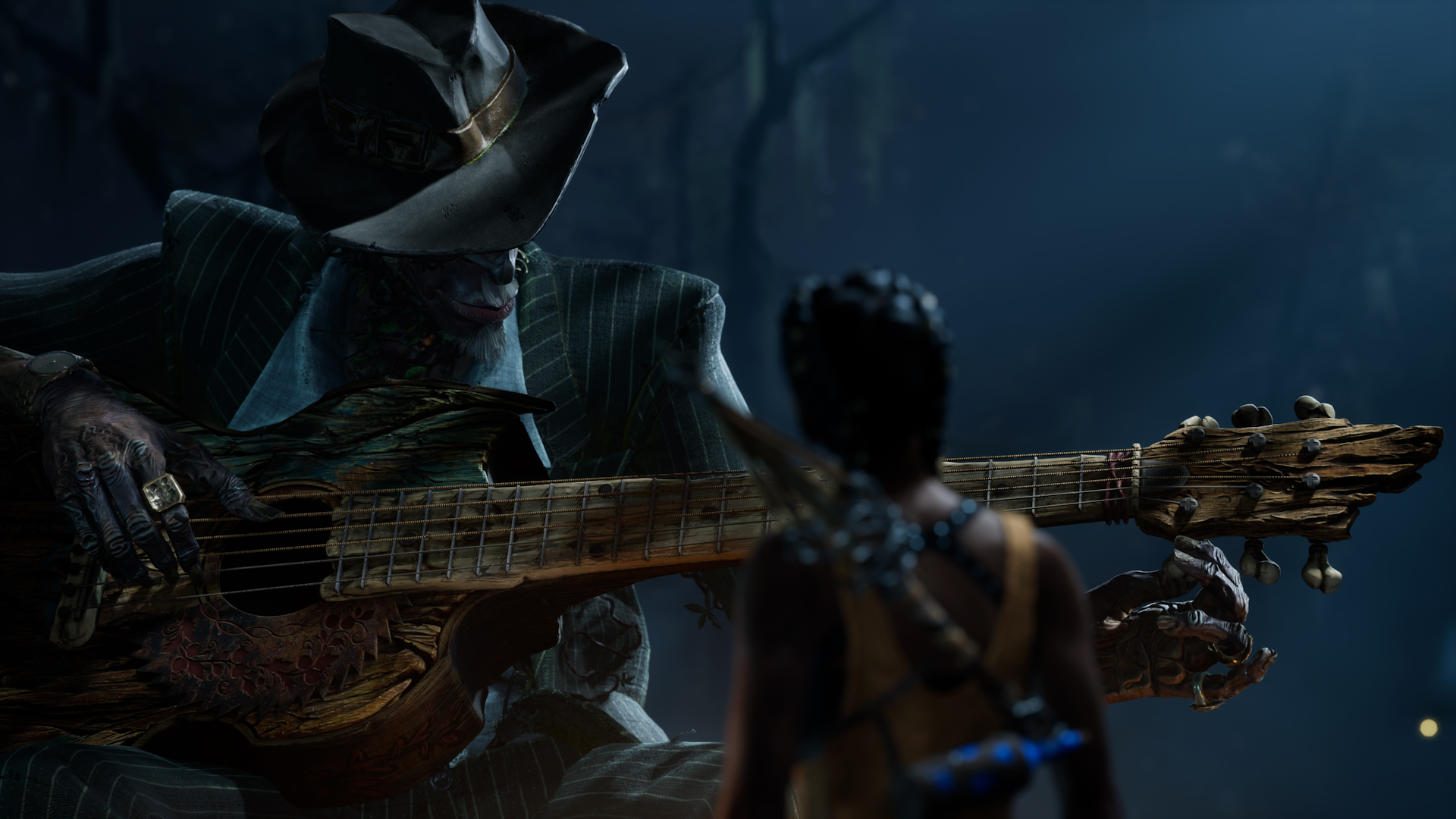
The Look
South of Midnight’s trailer has an arresting look – all elongated character silhouettes, painterly textures, and rich, soupy lighting. Referencing the likes of “Coraline” and the work of Rankin/Bass, Sears says, “the whole art style is very handcrafted, much like the sets and the maquettes that are built for stop-motion.
“If you look closely you might notice that the fibers of a character’s clothes are a bit coarser and looser than normal. It is as if a the clothing was plucked out of a miniature world and worn by a much larger person. That’s just one example, of course. Overall, we are going for a feeling of handcrafted everything rather than recreating photorealistic objects, which helps create the feeling of being in a folktale.”
It’s all part of Compulsion’s own studio DNA: “We are always looking for art direction that builds or reinforces the identity of the game,” continues Sears. “While this can be interesting to gamers who play the game, it is equally interesting to us as we work on the game. The process is more about the interpretation of objects, characters, textures, etc. into a style rather than trying to duplicate real world versions of those things.”
As much as anything else, that ability to experiment with the expected speaks to the freedom Compulsion has had to make the game it set out to – a personal, sometimes narratively challenging, deeply unusual experience.
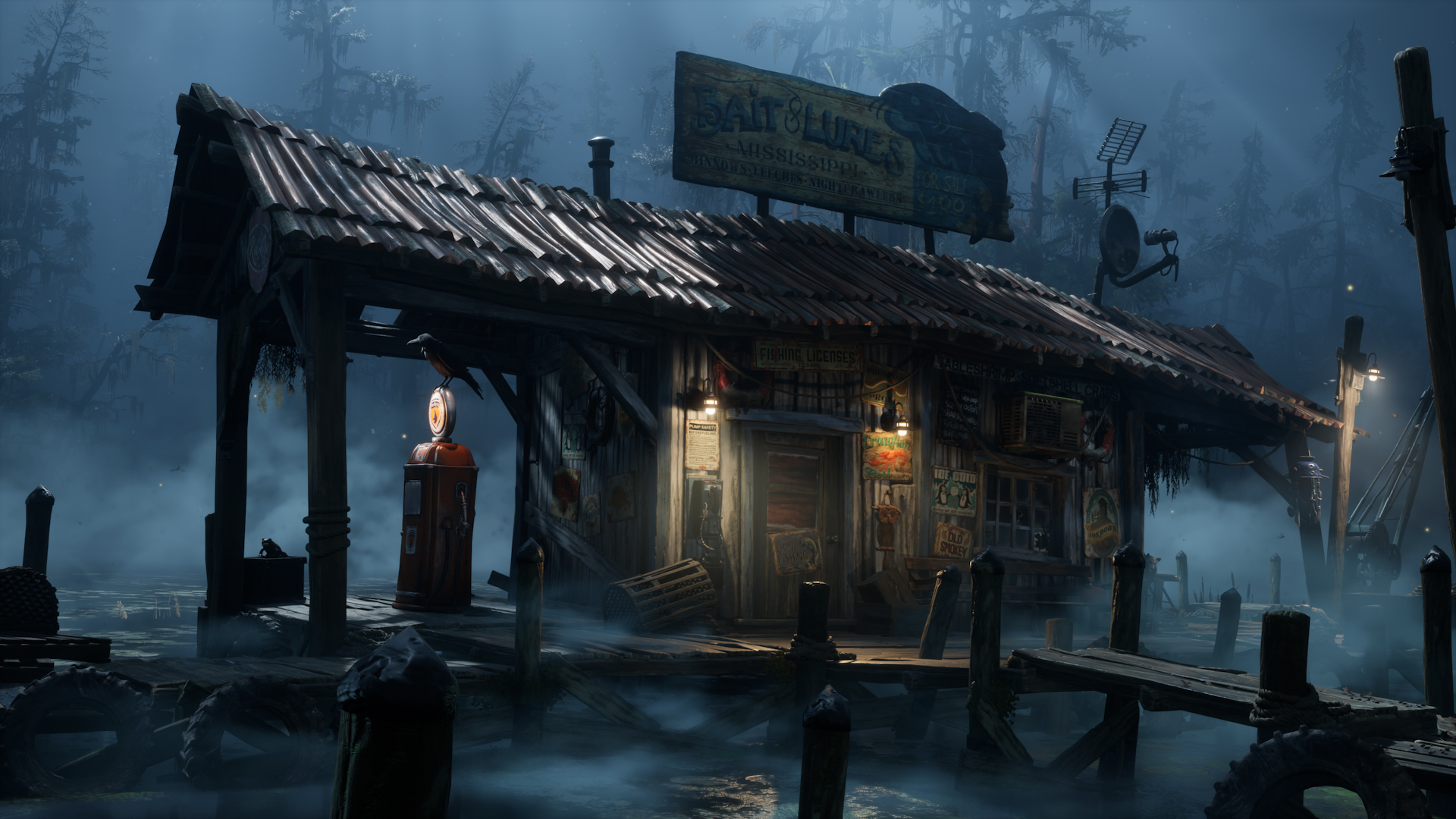
The Creation
“Working with Microsoft has been amazing,” says Sears, when I ask him what it’s been like on Compulsion’s first full journey as an Xbox Game Studio. “It’s one of the rare times I’ve made a game without fear. For me, this game was very personal, so I didn’t want to build it with someone who doesn’t understand what we’re trying to do or wouldn’t be supportive. Xbox was very reassuring and very supportive. It’s pretty rare to get that in game development.”
The collaboration with Xbox has run deep – in order to present the world of the South and its people with the right level of authenticity, Compulsion leveraged Xbox’s User Research Group and the Black Employee Resource Group. Even Lewis’ role on the game is a collaboration – his day job involves running Xbox’s Developer Acceleration Program, which was announced earlier this year. The team also pulled from outside Xbox, employing consulting group Sweet Baby to help craft the diversity of voices needed for a game like this.
“It’s important that we just empower the varying perspectives that we have on the broader team,” says Lewis of that effort for honest representation. “To be honest, does this make for some uncomfortable conversations? Yes. And that’s part of what we signed up for when we chose to share Hazel’s story, but the work of authenticity also goes beyond the team and our own research and due diligence. You don’t actually have to be from that area to attest that the American south has a history that makes it difficult to use as a setting without its difficult past, which we can still feel the impact of today.”
“There are people who may have enjoyed everything else in the Xbox portfolio, but they haven’t met a character like Hazel in anything that we put out.”
But there’s a fine balance between representing a place and its people, and taking on the wider cultural milieu that surrounds them. “At the end of the day, we want Hazel’s story to shine through. Hazel’s job is not to fix racism or the South’s troubled history,” says Lewis of the game’s intent. “Those challenges are not fair to her. Her job is to be seen as a person coming of age in a scary and beautiful world. Making her an authentic person that people like my wife, my daughter, my mother – who all look like Hazel – will hopefully recognise and relate to.”
In essence, Compulsion’s originality, and its due diligence on bringing in other perspectives and voices is what will help South of Midnight stand alone.
“I feel like this is the type of game that we need in our portfolio,” says Lewis. I feel like fans of Xbox want to see this game – there are people who may have enjoyed everything else in the portfolio, but they haven’t met a character like Hazel in anything that we put out. For Compulsion to be willing to bring that type of experience, I think it’s a much-needed part of what we deliver to Xbox fans. I’m super excited.”
